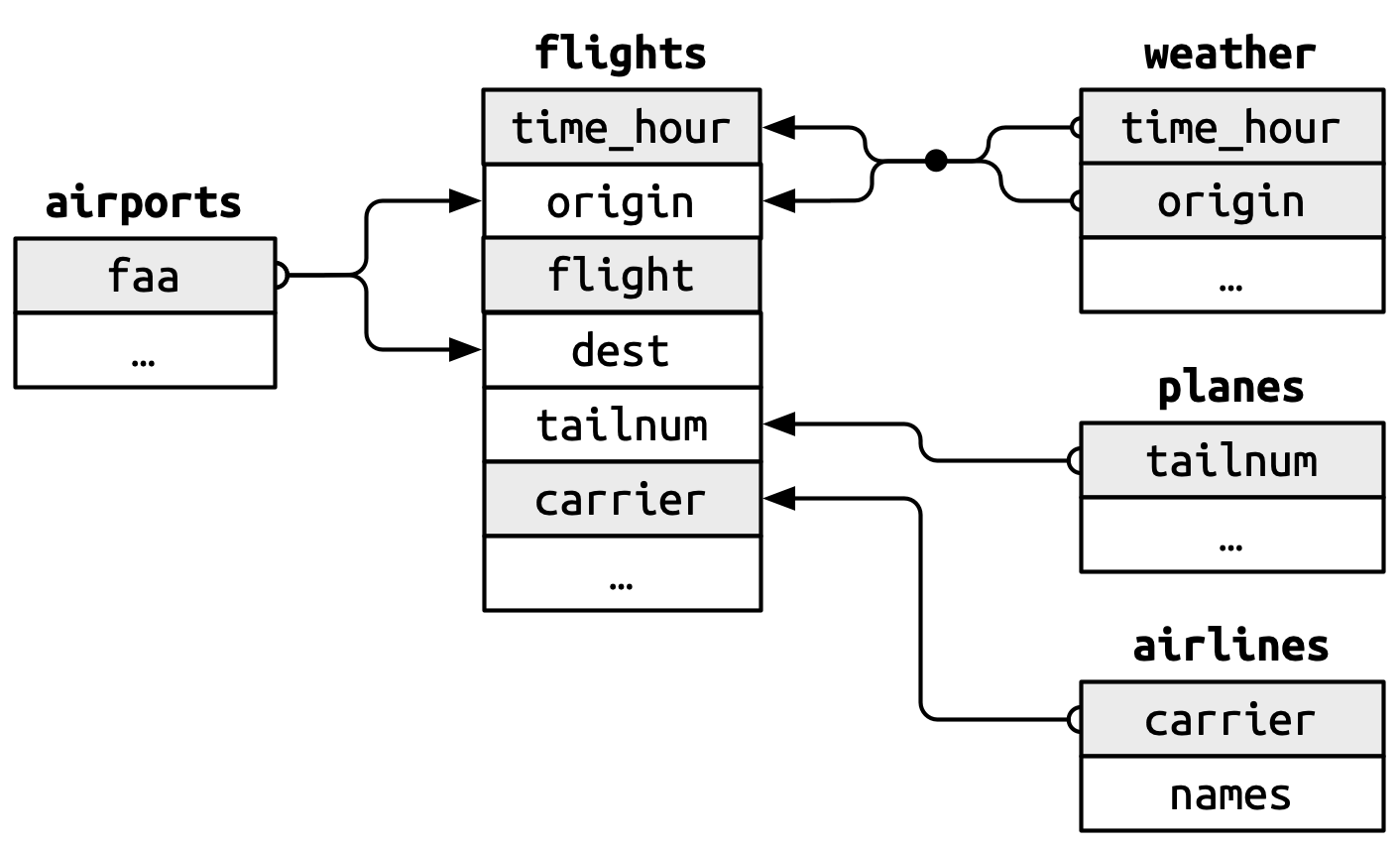AE 07: Using {duckdb} for NYC flights
Packages
We will use the following packages in this application exercise.
- {tidyverse}: For data import, wrangling, and visualization.
- {duckdb}: To query a DuckDB.
- {dbplyr}: To translate our {dplyr} and {tidyr} functions to SQL.
- {scales}: Formatting graph labels.
New York City flights data
The U.S. Department of Transportation publishes detailed statistics on flights originating in the United States. {nycflights13} is a highly popular R package containing information on all flights that departed NYC1 in 2013. The package was originally developed to provide practice wrangling and working with relational datasets.
That said, this package has become quite dated since it was originally developed in the mid-2010s. The same air travel data can be accessed for any airports in the United States using the {anyflights} package. The challenge is that data for more than a trivial handful of airports and years becomes significantly large and unwieldy to utilize.
To solve these issues, we will utilize a DuckDB that contains detailed air travel data for all NYC airports from 2015-2023. This dataset can be access from data/nyc-flights.duckdb.
Connect to the database
Demonstration: Connect to the local database and identify the tables.
con <- duckdb(dbdir = "data/nyc-flights.duckdb") |>
dbConnect()
dbListTables(con)[1] "airlines" "airports" "flights" "planes" "weather" The database has the following relational structure:
Demonstration: Use tbl() to create an object that represents each database table. This will allow us to use {dbplyr} to translate our code to the corresponding SQL query.
Translate some basic SQL queries
Your turn: Explain what each of the following SQL queries does, and recreate them using {dbplyr}.
SELECT flights.*
FROM flights
WHERE (dep_delay < arr_delay)Add response here.
# add code hereSELECT flights.*, distance / (air_time / 60.0) AS speed
FROM flightsAdd response here.
# add code hereWhat causes flight delays?
Your turn: What is the relationship between weather events and departure delays? Calculate the average departure delay and join with the weather table. How do these R commands translate to SQL? What trends do you see?
- Before summarizing
flights, examine theweathertable and figure out its unit of analysis. This will clue you in to how best to summarize theflightsdata. - Use
show_query()to examine the translated SQL code.
# add code hereNumber of flights departing NYC airports over time
Now let’s examine potential patterns or trends in the volume of flights departing NYC-area airports over time.
Create a date variable
Your turn: Currently flights does not have a standalone date variable that identifies the date of the flight. Create one and store it at the beginning of the table.
lubridate::make_date() can create a date variable from numeric columns which contain each of the date components.
# add code hereVisualize the volume of flights over time
Demonstration: Calculate the daily number of departing flights from NYC and visualize as a line graph.
# add code hereDemonstration: Calculate a rolling seven-day average number of flights departing from NYC.
# add code hereFootnotes
Specifically, John F. Kennedy International Airport (JFK), LaGuardia Airport (LGA), and Newark International Airport (EWR).↩︎

